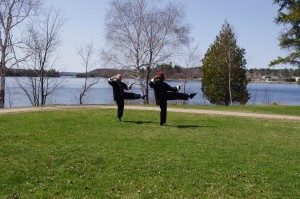
The art of taijiquan is much like the art of being a masterful magician. It requires a subtle skill and a balanced blend of techniques and tools that come together to form a state of “synchronicity”. Just like being a magician, there are many layers to your craft. A magician may employ the skill of illusionist, or the skill of being an escapist, then there is the slight of hand techniques, and of course, the masterful ” vanishing act”. All these skills require dedication, practice and discipline, just like the art of taijiquan. Each facet of
training should be intricately woven together so the final product appears to be flawless and limitless. The tools of a taiji boxer are hidden in his training and his ability to glean the skills from his daily practice, knowledge and interpretation of the classical text, with developed natural ability and persistent dedication to his craft. A demonstration of true synchronicity is like the quiet workings of a very exclusive watch. On the outside, the watch serves a basic function that is to measure and determine a constant known as time, but the mystery lies in the synchronicity of the unseen working parts, …the gears, springs levers and, of course, the power plant, the quartz crystal.A basic watch can only tell the time, (in hours, minutes and seconds). The more sophisticated watch can not only keep track of time, but also the month, the lunar cycle, direction, and dual time zones, speed and distance traveled, to name a few things.
The point is, it all starts with the same basic components, just as the practice of taijiboxing starts with the basic structure of the ” form”. The “set or form”,( as it is often called) is a wealth of hidden skills waiting to be rediscovered.
This wisdom of the old masters is a gold mine of treasure waiting to be revealed. If you choose to search for gold, you will need the right tools to find the treasure that is buried below the surface.
 1. The taijiboxer bag of tricks!!.
1. The taijiboxer bag of tricks!!.
The ability to use taijiquan as a martial art lies in the understanding and application of its fundamental principles. Most of these concepts may be found in the theoretical interpretations of “taiji classics”, but most are found by trial and error.
“Invest in loss.”
A) The skill of relaxation. The first key is to understand what it means to be relaxed. Relaxed does not mean collapsed. It means to have a relaxed awareness with a flexible but supple body, mind, and spirit. By achieving this skill both your attention and intention will be in a state of harmony allowing your awareness to expand beyond the obvious and the immediate. Consequently, you will gain the ability to focus without being easily distracted or in mindless isolation.
B) “Emptiness and fullness”. With this skill, it requires you to incorporate the principles of yin and yang, and the application of the “thirteen powers” (the five phases in the legs and feet), and eight triagrams in the arms and hands.
C) “ Evenness and slowness“. When using the principles of evenness and slowness, it means to match your opponents movements, while using the concept of” silk reeling”, thus creating a feeling of purposeful movement with balance and stability and continuous natural flow. (We practice slow to move fast,… you move fast, I move faster.)
D) “ Rooting and stability”. Conceptually, rooting means to be still, but not immobile. Rooting does not mean you become rigid and stiff. You should still be light on your feet. Mastery of this skill allows you to have maximum stability with minimal effort, allowing you a greater range of flexibility and upper body mobility to attack and defend, spontaneously and simultaneously.
 E) “Coordination and centering”. It requires many years of practice and more years of patience, coordination, relaxation and complete awareness in order for the body to move as one complete unit. By mastering this skill, your movements will not be premature or telegraphed, and you should not be tense or stiff. This negates the tendency to rely on speed, power and aggression as your only means for self-defense. Quite the opposite, all your movements are connected in a natural coordinated continuous flow, just like the natural way a shark moves in water or a bird flies in the sky (nothing is wasted and nothing is needed)…
E) “Coordination and centering”. It requires many years of practice and more years of patience, coordination, relaxation and complete awareness in order for the body to move as one complete unit. By mastering this skill, your movements will not be premature or telegraphed, and you should not be tense or stiff. This negates the tendency to rely on speed, power and aggression as your only means for self-defense. Quite the opposite, all your movements are connected in a natural coordinated continuous flow, just like the natural way a shark moves in water or a bird flies in the sky (nothing is wasted and nothing is needed)…
Economy of Motion
updated Synthesis 2017 see original
Synthesis
(and the Supreme Ultimate Fist of Taijiboxing)
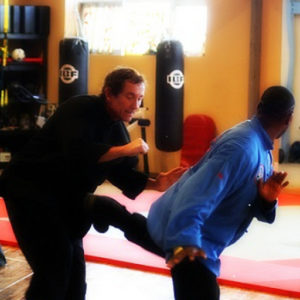
Use the art of foot placement, and range control to make sure when and if you do kick it will be effective!
The term synthesis is used in many fields, usually to mean a process which combines two or more pre-existing elements resulting in the formation of something new. The verb would be “to synthesize” meaning to make or form a synthesis.
Taijiboxing is both a discipline and an art form, and has multiple levels of expression and is popular worldwide. It is renowned for its many preventive disease benefits as well as it numerous natural health benefits. It can be practiced by young and old, strong and weak, in sickness and in health. Both the rich and the poor can glean the benefits from this ancient discipline.
But what sets this discipline apart from the many other forms of exercise and martial arts systems? I believe that, within the practice of Taijiquan, is the unique availability of self-guided, on-going development, allowing each practitioner the ability to continually improve, share, and grow as they age in life, in mind, in body, and in spirit…
This unique trait makes Taijiquan practice, principles and application unlimited and timeless, making it, in a sense, the supreme ultimate, as it is limited in potential only by the boundaries of each practitioner.
Consequently, it never grows old and is never in or out of style. This, unlike most martial arts disciplines, allows this system to be both universal and also international. With each new generation of Taijiboxer comes the refreshing of the old wisdom becoming the new rediscovered knowledge.
This concept of natural transmission through the spoken word, and to learn by doing is quite foreign and difficult to sell in today’s fast-paced, information age, and the modes of transmission are much more difficult to negotiate. As the world turns and our universe appears smaller, our full awareness of self also gets distorted. We focus on technology and over-consumerism. Our feeling is continuously pacified and we are disconnected, first from our true self (the concept of a higher power, God, Buddha, Jehovah, Ala, nature), then from each other, our family and our friends, then our neighbors, relatives, and work acquaintances. This creates a subdued feeling and sense of isolation, … and a society of shut inns.
Everyone believes their only mandate is to foster a sense of survival, and life becomes a constant struggle to survive, and very few people actually live.
“Golden rooster stands on one leg”
The essence of Taijiboxing is found in Buddhism, which is all about “compassion and sharing”, and the fundamentals of Taoism, which promotes “self awareness, and interaction and understanding of universal cycles of cause and effect, and the collective cooperation between man and his universe to promote longevity and maintain harmony on the planet.
These two concepts enhance universal, compassionate enlightenment with a sense of immortality of the spirit. These transcend the boundaries of mind and body, therefore, we no longer struggle with death, dying and diseases, which are all natural processes. But with a caring, compassionate lifestyle in harmony with your environment, you know and can choose to embrace life, and nurture the supreme, ultimate gifts found within the daily practice of Taijiquan.
Synthesis is the unseen ability to draw from your past, present, experiences and future in intuitive knowledge and observations. These concepts give you the unique ability to create an alternative solution to any given or unforeseeable conflict.
This ability in some people may be innate, but, in most, is learned, and in a few individuals can be developed. The ancient Taiji master must have discovered a method of harnessing this truth and applied it to their daily life. This wisdom was applied in both physical conflicts and in everyday life experiences on the journey of life…
a) Breathing and Qi kung. The use of breathing is unique but not exclusive to taijiquan. Most disciplines of martial arts and competitive sports utilize the inherent benefits of proper breathing. The one major difference is that, in taijiquan, the purpose is dedicated to a breathing system known as “ Nei kung”.
This specific method of breathing is called the “internal merit system”. The application of this specific style of breathing allows each practitioner the full benefits of his every breath, both for healing himself or others, and protection (as in self-defense and fa jin).
This is accomplished through a specific method of visualization in meditation, diaphragmatic breathing techniques, concentration, attention and practice of mental, spiritual and physiological cues that allow the process to take place over time.
 The taijiboxer combines all the tools and skills to create a system of unlimited phases in power, speed , stillness and motion.
The taijiboxer combines all the tools and skills to create a system of unlimited phases in power, speed , stillness and motion.
These skills provide the ultimate expression of synchronicity, and like the magician, allow each practitioner an opportunity to have a full bag of tricks to be used and shared at their discretion. Thanks for taking the time to read my article. I hope it helps and empowers you on your journey of self discovery in the wonderful art of taijiquan.
Peace Sifu Dennis Pounall
This gift was sometimes passed on to a chosen few, but, in most cases, died with the master, or was never fully transmitted. For this reason, Taijiquan is still the supreme ultimate fist, and awaits the reincarnation of the gifts of the masters for all to benefit. (It’s hidden in plain sight.) The essential aspects of synchronicity are the applications of the five phases of Taijiboxing.
1. stillness in motion and motion in stillness.
2. “Silk reeling skill” and Synchronicity and “Economy of Motion”
3.Chi Na in (5 levels )
4..Fa Jin and Chi kung
5. Shuai Jiao
These concepts, when integrated with meditation, healthy living, a wholesome, varied diet, and a natural zest for life, help to maintain Taijiboxing as one of the supreme ultimate gifts left by the ancient Taoist Sages..
In conclusion Taijiquan and Taijiboxing have a synergistic approach to maintain a healthy, vibrant attitude to life and living. The philosophy and discipline, found in the application of Taijiboxing principles to everyday living, helps to maintain an open and free- flowing mindset of synthesis that allows for spontaneous, flexible options to living a full, happier life.
I hope you enjoy my article. Please feel free to comment and leave your ideas and observations. Keep the information flowing..
Sifu Dennis Pounall
Taijiboxing and the Art of Precision Shooting
Taijiboxing is a martial art akin to taijiquan the emphasis being on retaining the combative aspect within the practice of Taijiquan for self defense as well as enhancing longevity. My name is Dennis Pounall and I have been Plying Taijiboxing for about 15 years and practicing martial arts about 30 yrs now. I am writing this article to share a experience I came across last year and wanted other Taiji players to be aware of TAIJIQUAN MULTIFACETED range of appeal. Mr John Rochon is a world class internationally recognized precision competitive sport shooter( now retired) . He came to center in Elliot Lake (VitFitKlub) and said he was interested in learning a bit about “Tai Chi” for relaxation. I stated that I practice Taiji Quan which is very similar to Tai Chi for health and relaxation except we have tried to retain most of the self defense applications and the Qi kung internal harmony along with the art. This making it both a self guided discipline as well as a martial art. He was immediately intrigued and decided to give it a try. The next week he came into class I had advised him to wear loose clothing and flat…We began with
standing meditation “Embrace the One”and I described the concept of“stillness and motion”, within the paradigm of whole body breathing and mindful meditation.Afterwards, we did some standard Taiji warm up exercises and started on the first 5 moves for the yang style classical form:commencement; turn; ward-off;right; and the grasp bird’s tail
sequence. I demonstrated the form, breaking the moves down, explaining both the energetic concepts as well as possible self defense applications.
Therefore, the practitioner need only focus on the form and function! The Sight Picture Meditation in action
I always emphasize “no absolutes” in taijiboxing. Each movement must be naturally
spontaneous and flexible for proper applications and fluid energetic flow. Following this, John came to and asked me a few questions after class.
 :”This is the purpose of ‘Stillness and Motion’.”
:”This is the purpose of ‘Stillness and Motion’.”
“Why in standing meditation, do we stand with our feet, toe-in” I responded, “For stability. It’s why I focus so much on the breathing and motion.” Following this, John came to class and asked me a few questions: “Why in standing meditation, do we stand with our feet, toe-in?” I responded, “For stability. It’s why I focus so much on the breathing and motion.”
“Perfect practice makes perfect.“
Then he asked me why do we move so slow? I responded, “We practice slow to move fast.”
Finally, he asked if you are relaxed, how can you move fast if you are not ready?I said,
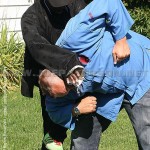
He pondered that for a while and said, “I wish I had studied Taiji when I was competitively shooting. It would have made all
the difference.” Here is where the discussion began, we spoke of the similarities and differences between competitive Taiji Quan demonstrations and competitive precision shooting and found more similarities than differences.
The tools required to be a superior competitive precision shooter are as follows.
Taijiboxing Precision Shooting :
• Self Discipline ATTENTION TO DETAIL
• patience SIGHT PICTURE
• persistence Reassessment and practice
• self examination Application of training skills
• Practice synchronization of training
• Training delivery and adjustment
These traits are also found in the discipline of Taijiboxing and the art form of the Taiji Quan. Both disciplines require a relaxed alertness and being attuned to one’s subtle energy and muscular control that is unique to the individual. Combine this with synchronized breathing control and attention to detail, one can then maintain focus on completion of the task at hand. Regardless of whether it is a Taiji push-hand competition, weapons demonstration, precision shooting match, a perfect tennis
score or a golf game, the discipline works!
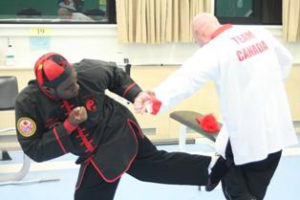
When you are able to combine your attention with your intentions without being locked into the results, you’ll achieve success in action (Yin and Yang). With practice and patience, you’ll also achieve “Enlightenment and Illumination.”
You’ll have the perfect match for success, regardless of the outcome….
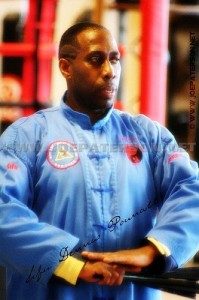
Thanks for reading this article. I hope you enjoyed it.
peace sifu Dennis Pounall
see more below pictures included>>
[000608]Another Revised edition_Taijiboxing and the art of precision shooting



